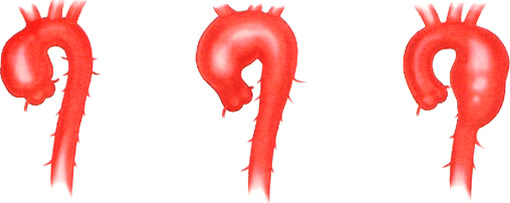

Treatment for Ascending Aortic Aneurysm –

Note the contrast dye that is “leaking” back into the heart.Īscending Aortic Aneurysm – curved part of the aorta in the front of the chest above the coronary arteries and before the arch. Relatives of patients with thoracic aortic aneurysms should undergo an elective screening test such as echocardiography, CT or MRI.Īneurysms can occur in one or more of the various portions of the thoracic aorta:Īortic Root Aneurysm – portion of the aorta closest to the heart and involves the arteries that supply blood and oxygen to the heart.Īngiographic picture of large aortic root with a severely leaking aortic valve. Thus, when diagnosed they should be followed by a specialized team. However, in most cases thoracic aortic aneurysms tend not to cause symptoms until it is too late. As the aorta gets larger, there is a risk that the wall of the aorta can tear or burst.Īs the aneurysm grows there can be symptoms of shortness of breath, especially if the associated valve is leaking. The aorta carries the entire blood flow out of the heart and supplies blood and oxygen to the brain, chest and abdominal organs. Diagnosis of an aneurysm is a frightening thing to many patients, but in the majority of cases, it is a dilated aorta that can be monitored with CT scans, and will not worsen to a point that requires surgery.Thoracic Aortic Aneurysms are a dilation or growth of the aorta due to a weakening in the wall of the artery. In fact, most patients who are evaluated for aneurysms do not need surgery. If an aneurysm is very small, it may not require surgery initially. Some patients benefit most from repair using a stent, others need traditional open surgery, and still others benefit from hybrid procedures that blend open repair with the use of stent grafts.

Evaluation usually begins with a CT scan or MRI, during which the surgeon carefully checks to see which type of repair may be best. Surgery for a Descending Aortic AneurysmĪneurysms in the descending aorta generally result from atherosclerosis ("hardening of the arteries") in older patients. More precise determination is based on the ratio between the normal diameter compared to the abnormal vessel size. Surgery is usually performed if the diameter of the aorta reaches 5.5 cm (or more or less, depending on the person's height). 2) If the valve is functioning well, surgical intervention is not considered until the diameter of the aorta exceeds 5cm. When operating because of bicuspid valve disease, an aortic root procedure is usually considered necessary if the root diameter is enlarged to 4 cm or greater. 1) If there is an aneurysm in the aortic root and the aortic valve is calcified or stenotic, replacement of the aortic root may be necessary. Aortic Root Surgeryįor patients who have aneurysms of the aortic root (the place where the ascending aorta meets the heart muscle), there are two main indications for surgery. The decision to monitor a patient instead of performing an operation is made on an individual basis, but is guided by factors listed below. This page discusses the evaluation process by which the need for non-emergency surgery is determined. Emergencies occur when an aneurysm ruptures or the aorta dissects, requiring immediate surgery. The advantage of being seen in a Center of Excellence early in the process is that it begins a relationship with your medical/surgical team. Surgery for aortic aneurysms may be done on an emergency basis, or if detected in advance, it may be planned as an elective procedure.


 0 kommentar(er)
0 kommentar(er)
